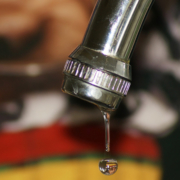The San Diego County Water Authority’s Board of Directors on March 28 threw its support behind a coordinated statewide approach to ensure that all communities in California have daily access to safe, reliable drinking water.
The California State Water Resources Control Board has identified 329 water systems statewide that serve contaminated drinking water or cannot provide reliable water service due to unsound infrastructure or lack of resources. Most of the systems are in rural areas and serve fewer than 10,000 people.
More than a half-dozen bills have been introduced in Sacramento this legislative session to provide safe and reliable water supplies for disadvantaged communities in the Central and Salinas Valleys.
The Water Authority Board supports a plan to combine several measures into a unified legislative package.
“By amending several components of the relevant bills and linking them in a modified single reform package, we would advance a more comprehensive fix to drinking water quality issues throughout the state,” said Glenn Farrel, government relations manager for the Water Authority.
Safe Drinking Water Trust Fund
In addition, the Water Authority Board voted to support Senate Bills 414 and 669, both of which provide alternatives to water tax proposals in the Legislature that the agency helped defeat last year.
- SB 414 would establish the Small System Water Authority Act of 2019 and authorize the creation of small system water authorities that could absorb, improve and competently operate public water systems that are chronically out of compliance with drinking water standards.
- SB 669 would create the Safe Drinking Water Trust Fund to collect federal contributions, voluntary contributions, gifts, grants, bequests, transfers by the Legislature from the General Fund and the Greenhouse Gas Reduction Fund, funding from authorized general obligation bond acts, and other sources. Revenues would help community water systems in disadvantaged communities that chronically fail to meet federal and state drinking water standards and do not have the money to pay for operation and maintenance costs to comply with those standards.
The Water Authority Board voted to oppose SB 200, unless it is amended to address numerous concerns that are outlined in the staff report to the Water Authority’s Board.
A fourth legislative measure, an Administration Budget Trailer Bill: Environmental Justice – Safe and Affordable Drinking Water and Exide Cleanup, would impose a tax on water and agricultural activities to finance safe drinking water efforts. The Board voted to oppose the budget trailer bill unless it is amended, among other things, to remove water tax provisions and instead appropriate $1 billion in budget surplus funds to the Safe Drinking Water Trust Fund.




